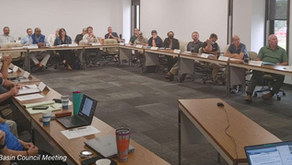
The infrastructure crisis leaves us with too much public money to spend and too few people to manage the work. One trending solution is to allow small capital projects to be managed by internal operations staff. And why not? Many renewal and replacement projects require similar equipment and must minimize operational disruptions. Allowing operations to lead small capital projects is not a bad idea if you adequately consider these three important issues.
Most Operations Staff Are Not Trained as Project Managers
One of my clients refers to the project managers within the engineering department as big “PMs.” They are trained to oversee the different phases of project development. Big PMs are comfortable with outside engineers, architects, building inspectors, and licensed contractors. Big PMs are trained in procurement and contracting laws.
Little “pm’s” are good at their particular trades, manage people and processes, and generally understand the construction and commissioning phases. But little pm’s don’t have much formal training in project management.
#1 Small Projects Need Charters Like Big Projects
Most big PMs understand the value of a good chartering process that outlines the working agreement between all of the players. Small projects need to be chartered just like big projects. If you don’t like formal charters, many of the common elements of a charter need to be documented and communicated through a kickoff meeting and related communication.
These are a few of the important chartering elements.
Define Project Objectives
Identify Stakeholders
Establish Project Scope
Develop a Project Schedule
Determine Project Budget
Assess Dependencies and Risks
Establish Communication Channels
Define Project Governance (especially decision-making processes and escalation procedures)
Obtain Necessary Approvals (internal and external)
Establish and Share Project Success Measures
Conduct Kick-Off/Chartering Meeting
Perform Formal Reviews at Key Milestones
#2 Establish Procedures For Converting Capital Projects into Operating Assets
A second important element is converting the capital project assets into operating assets. On large projects, the design team, owner's agent, or general contractor usually holds the responsibility for providing this in a format the owner provides. Converting this information from the project management information system (PMIS) to the computerized maintenance management system (CMMS) is no treat. However, it is a standard component of most big capital projects.

Small capital projects led by operations staff don’t often have the structure or time to do this well. In my experience, the lack of formal project management processes is a big part of the problem. The biggest issue is operations staff having to move quickly to the next activity or crisis.
#3 Remember the As-Builts
The third important element is getting as-builts. Similar to migrating the asset data, the record drawings don’t get moved into the CMMS. Well, if there are record drawings.
Most small capital projects don’t require much design or permitting. They may require construction bids, but the bidding often involves informal supporting documents and is procured with standard purchase orders. Plus, there are not many CADD professionals in the operations department to generate as-builts on the project's back end.
Practical Solutions for Capital Projects Led By Operations
There are a handful of things we recommend for successful small project delivery.
Identify which operating accounts (i.e., “bucket accounts” like replace valves or replace computer servers) should be treated as projects.
Treat identified operations projects as projects, not simply as something to charge work against. Managing accounts with work orders is not the same as managing projects.
Provide some formal project management training to your little pm’s.
Assign a big PM to shadow and support your little pm and their internal project(s). It’s a good idea to assign a person from accounting, too.
Establish formal processes and procedures for internally delivered small projects. Your big PM processes and procedures are a good starting point, but there are many differences with small projects delivered by operations.
JD Solomon Inc. provides support services for this type of specialized project delivery. We also have several guidance documents and checklists to help jump-start a successful program. Let us know if we can help.
JD Solomon Inc. provides solutions for program development, asset management, and facilitation at the nexus of facilities, infrastructure, and the environment. Subscribe for monthly updates related to our firm.




Comments